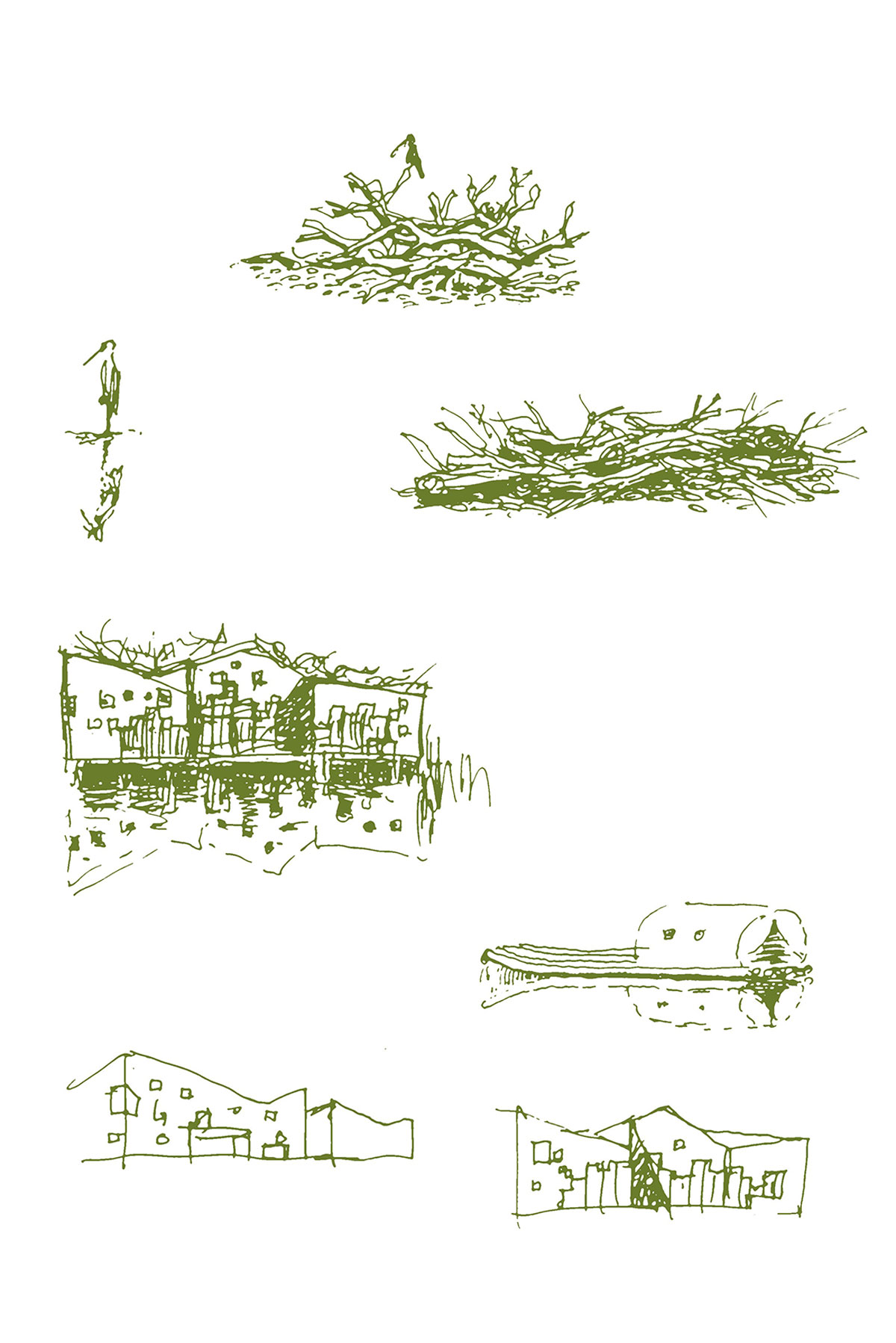Submitted by Chaolee Kuo
The Habitat of Biodiversity- Taijiang Visitor Center in Taiwan
Taiwan Architecture News - Jan 13, 2020 - 19:09 14198 views

BaF (Bio-architecture Formosana) releases a successful eco-design Taijiang Administrative and Visitor Centers of the Taijiang National Park in Tainan, Taiwan.
The project provides comprehensive and innovative services for both tourism and sustainability in order to satisfy demands for business management, tourism, and conservation researches.
By choosing the area between the north Shi-Tsao Avenue and the Brine Grass Creek as the site for the administrative and service center in the future, the local environment reflects the Taijiang National park's ecological and cultural histories, with multidimensional qualities of various industries. Taijiang Campus is also a candidate of EEWH Diamond grade, the green building certification system in Taiwan which combines the sustainable environment and green technology as a new impression of Tainan.

The architecture blends into the natural context effortlessly. Image © BaF

Elevations show digital parameter vocabulary. Image © BaF
Campus lifted up on the fish farm
The building is elevated above the fish farm, responding to the natural context on site. A connected waterway is established to connect individual fish farms on site and also to nearby Taijiang rivers system. The formation of the water network system can reduce amount of evaporation, thus increase water salinity and introduce a wider range of biodiversity. Besides that, the water gates within the water network will closed automatically during heavy rainstorm to prevent flood.

Spatial analysis. Image © BaF

Spatial Organization. Image © BaF
Taijiang settlements
The building masses consists of various sizes that resemble a Taijiang island that is deconstructed into Taijiang settlements with courtyards and alleys. After a series of microclimate simulation with computer software, the width and movement in between the courtyards and alleys are adjusted. The building functionality, relationship, layering of spaces and building height parameter are the criteria that decide the building form. Through the simulation software, it shows that the nature environment and formation of settlements are closely related.
The courtyards are activity spaces formed from building masses enclosure. The openings of temple courtyard face towards East and West, which efficiently stop Northern North-east wind during winter, on the contrary allows ventilation from South-west wind to provide comfortable outdoor activity space in summer. The roadways and water network break the building masses into smaller forms in order to allow sufficient ventilation and reduce solar heat. The architecture reflects space layout from traditional settlements, essences of Tainan can be traced along the alleys whereas the elevation was built by digital measures along with considerations on interior functionality.

Sun path and shadow casting analysis. Image © BaF

Concept sketches. Image © BaF

Section of courtyard. Image © BaF

Roof-wall heat insulation system. Image © BaF
Habitat of biodiversity
The settlement is an entity that inherits local culture and industries, moreover it becomes the habitat to protect the biodiversity. The greeneries are well preserved without disturbing the natural habitat for living organisms. The elevated design serves the purpose to maintain the natural habitat. The oyster shells and floating timbers at the sea port are also scavenged as one of the building materials to reduce trashes at the estuary. The oyster shells and timbers are used on the roof to provide a natural activity space for birds.

Image © BaF
The design team used the technology of Building Information Modelling (BIM) to design the prototype. The structural systems, building materials, openings, ENVLOAD and fire resistant issues are integrated in the technology, which attained some complexities. This helps to improve the understanding during construction. The calculation of carbon footprint is completed from initial stage until detail design. The architecture is mainly of reinforced concrete structure and Portland cement to increase the lifespan of concrete and resist salt corrosion, thus provide a sustainable ecosystem in the Taijiang Campus.
Project facts
Project name: Taijiang Administrative and Visitor Centers of Taijiang National Park
Location: 118, Sicao Blvd., Annan Dist., Tainan City 709, Taiwan
Designed years: 2012-13
Construction years: 2013-16
Architects: Ying Chao KUO & Ching Hwa CHANG/ BaF (Bio-architecture Formosana)
Project Team: Jr Yuan CHEN, Hsin Yi CHEN, Yi Fan CHEN, Wen Yao Wung, Bo Ru CHEN, Yue Lun TASI, Yu Tang LIEN, Zhen Jia LI, Chih Lin TAN, Xing Hua HAN, Ming Hua XUE, Ming Hui LIN, Rui Long WU
Photographs: © BaF/ Rui Jsung PAN, Lucas K. Doolan, Guanting CHEN
All images and drawings courtesy of BaF/ Bio-architecture Formosana
> via BaF
